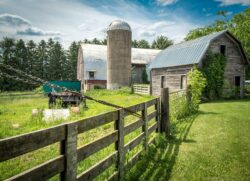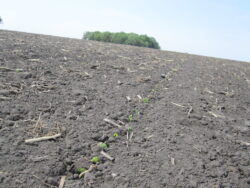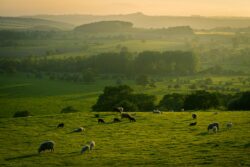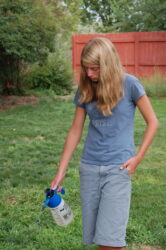Kentucky Bluegrass: A Staple for Wisconsin Lawns
Kentucky Bluegrass is not only adaptable but thrives across Wisconsin’s diverse climate zones.
Known for its thick, robust blades and a deep root system, Kentucky Bluegrass stands out as one of the most resilient turfgrasses, boasting high cold- and drought-tolerance.
This grass type is ideal for Wisconsin’s northern climate, enduring summer heat and winter freezes with equal resilience.
Wisconsin and Cool Season Growing Zones
Wisconsin is geographically situated in a region that experiences cold winters and moderate summers, making it part of the cool season growing zones.
These zones, specifically Zones 3 to 5 in Wisconsin, are characterized by their ability to support grasses and plants that thrive in cooler temperatures.
The state spans from the frigid northwestern parts, where temperatures can dip as low as -35 degrees F (-37 C), to the milder southern and eastern areas, with winter temperatures hovering around -10 to -20 degrees F (-23 to -29 C).
This climate is ideal for cool-season grasses like Kentucky Bluegrass, which can grow well in various soil conditions and maintain their color and health throughout the winter months.
The Resilience of Kentucky Bluegrass in Wisconsin
Kentucky Bluegrass’s adaptability to Wisconsin’s climate is attributed to its deep root system, which allows it to grow taller and spread faster, ensuring a lush, green lawn throughout the varying seasons.
It performs best in the state’s more northern regions during summer and is well-equipped to withstand harsh winter conditions.
- Climate Compatibility: Kentucky Bluegrass is perfectly suited for Wisconsin’s cold winters and can thrive in Zones 3 to 5, where temperatures can plummet to as low as -35 degrees F (-37 C.).
- Soil Adaptability: This grass type grows well in various soil conditions, including heavy clay and sandy soils, making it a versatile choice for Wisconsin gardeners and landscapers.
Planting and Maintenance Tips
For those considering Kentucky Bluegrass for their Wisconsin lawns, the end of summer presents the ideal planting window.
This timing leverages warm soil temperatures and reduced competition for resources, setting the stage for successful germination and growth.
Regular watering, appropriate fertilization, and consistent mowing are key to maintaining the health and appearance of Kentucky Bluegrass lawns.
FAQs: Kentucky Bluegrass in Wisconsin
Q: How does Kentucky Bluegrass handle Wisconsin’s winters? A: Kentucky Bluegrass is highly cold-tolerant, thanks to its deep root system, making it capable of surviving and thriving through Wisconsin’s winter months.
Q: Is Kentucky Bluegrass suitable for all areas of Wisconsin? A: Yes, Kentucky Bluegrass is adaptable across Wisconsin’s climate zones, performing well in both the cooler northern regions and the milder southern areas.
Q: What maintenance does Kentucky Bluegrass require? A: Key maintenance practices include regular watering (without overwatering), fertilizing with a balanced approach to prevent disease and weed growth, and mowing to the recommended height to keep the turf healthy and aesthetically pleasing.
Kentucky Bluegrass: A Green Choice for Wisconsin Lawns
Kentucky Bluegrass’s resilience, beauty, and adaptability make it a top choice for Wisconsin lawns.
Its ability to withstand the state’s climate extremes, from hot summers to freezing winters, coupled with its lush, green appearance, ensures that Kentucky Bluegrass remains a popular option for homeowners and landscapers alike.
Whether you’re establishing a new lawn or overseeding an existing one, Kentucky Bluegrass offers a durable, attractive turf solution that embodies the spirit of Wisconsin’s outdoor spaces.
In Summary: Kentucky Bluegrass in Wisconsin
- Highly adaptable to Wisconsin’s climate, thriving in both summer heat and winter cold.
- Deep root system enhances drought tolerance and resilience, promoting robust growth.
- Ideal planting time at the end of summer, with maintenance practices focused on watering, fertilizing, and mowing to ensure a healthy, vibrant lawn.
Sources
- Nature’s Seed: Offers a comprehensive guide to the best grass seeds for Wisconsin, including Kentucky Bluegrass. Explore Best Grass Seed for Wisconsin
- Wisconsin Horticulture Extension: Provides insights into lawn care and the suitability of Kentucky Bluegrass for Wisconsin lawns. Read about Lawn Care in Wisconsin




